Articles
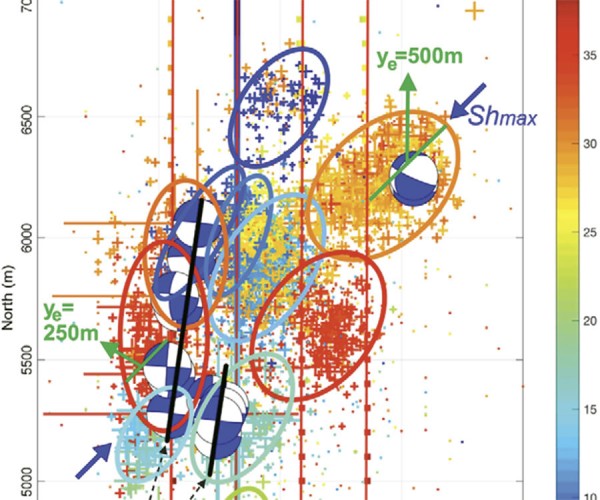
Reservoir Characterization of a Duvernay-Fox Creek Shale Reservoir using Seismic, Microseismic, and Well Log Data
Germán Rodríguez-Pradilla
The Duvernay Formation, located in central Alberta, Canada, is mainly an organic-rich shale that is a source rock for conventional oil and gas reservoirs, and more recently, also very attractive for exploitation as an unconventional shale play. The development of these types of plays requires the implementation of unconventional techniques,…

Reflections on Dave Robson
Brian Schulte
I did not know Dave Robson, I knew of him. We at the CSEG RECORDER feel that we should honour those who have made a significant contribution to our society or our industry and Dave has done both. We do this to honour them, reflect on them leaving us, and…

Introduction to April Focus: Induced Seismicity
Wendell Pardasie
Microseismic monitoring in the oil and gas industry is the process whereby typically low magnitude seismic events (below ~1 moment magnitude) are detected and located in the subsurface during hydraulic fracturing utilizing downhole, surface or shallow subsurface arrays. Many definitions have used wording such as small scale or micro earthquakes…

Injection-Induced Seismicity: End of the Beginning?
Shawn Maxwell
For the last several years there have been numerous technical workshops on injection-induced seismicity which, looking back, serve as snapshots documenting the rapid evolution in our understanding of this important topic. With time, the tone of these workshops has changed in step with advancement by industry, regulators and academics managing…
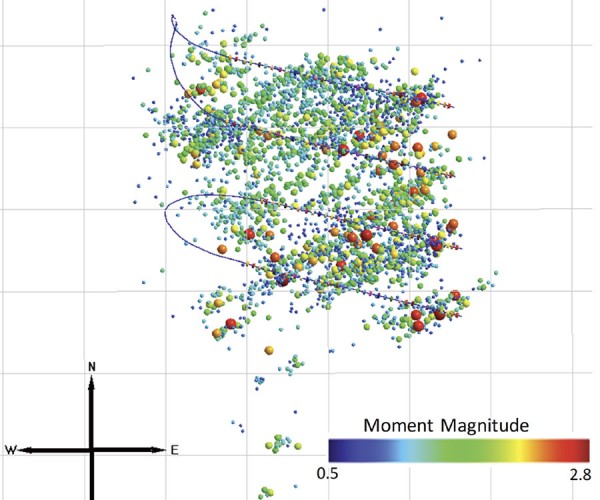
Ranking Operation Scenarios for Effective Mitigation of Hydraulic Fracture-Induced Seismicity
Shawn Maxwell, Devin Garrett, Paige Mamer and Atena Pirayehgar
A magnitude-based, traffic light protocol is the most common mitigation approach to injection-induced seismicity, adopted by both regulators and operators throughout North America. Despite challenges associated with a protocol based on an estimate of seismic source strength, magnitude-based protocols still prevail over alternatives such as using measured ground motions. Regardless…
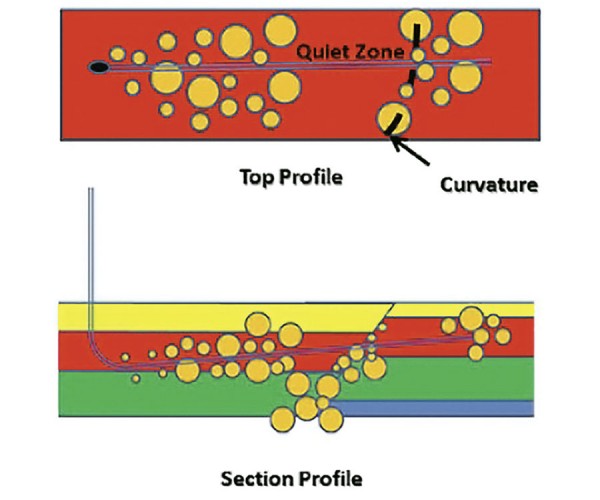
Economics of Induced Seismicity: Trying to identify faults in the horizontal well planning stage
Brian Wm Schulte
“Induced seismicity” refers to a seismic event that is caused by pore pressure and stress change associated with human activity (Boroumand and Maghsoudi, 2016). The maximum magnitude of induced earthquakes is smaller than what is seen with natural earthquakes (Metz et al., 2017); they tend to occur in swarms (Metz et…

CSEG Changing of the Guard
John L.J. Duhault
While the CSEG Board of Directors would not consider themselves “sentries” they are however, custodians of the not-for-profit association: Canadian Society of Exploration Geophysicists, your society.
...
Forecasting Bitumen State
D. Gray, D. Todorovic-Marinic, G. Larson, J. Zhang, D.J. Naidu, M. Letizia, K.A. Wagner, and M. Palka
...
In Memoriam: Dr. Kenneth Duckworth
Neda Boroumand, David Henley and Amanda Hall
Ken Duckworth, retired Professor of Geophysics at the University of Calgary, died peacefully on the evening of February 18, 2018 at the Foothills Hospital.
...
In Memoriam: Peter Boyd
Ann Mooney
It is with great sadness that we share with you the passing of Peter Boyd, co-founder of Arcis Corporation.
...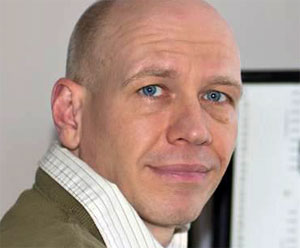
How Widespread is Human-Induced Seismicity in the United States & Canada?
Mirko van der Baan
There has been significant public and scientific interest in the observation of changed seismicity rates in North America since 2008, possibly due to human activities. We find that the seismicity rate in Oklahoma between 2008 and 2016 is strongly correlated to increased hydrocarbon production.
...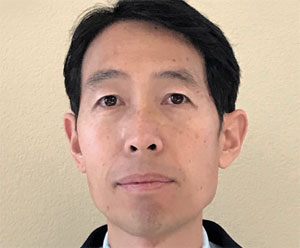
Introduction to March Focus: Salt and Subsalt Imaging in the Gulf of Mexico
Quincy Zhang
Subsalt imaging is one of the most critical technologies driving exploration to farther and deeper frontier areas in the Gulf of Mexico. For almost every project about subsalt imaging in the Gulf of Mexico, the three most important issues always are...
...
Salt Modeling Challenges and Strategies in the Mississippi Canyon, Gulf of Mexico
Quincy Zhang, Cristina Reta-Tang and Gary Rodriguez
In the Mississippi Canyon a unique characteristic of salt geometries are their stacking hourglass shapes – autochthonous Louann salt forms the lower part, allochthonous Mesozoic salt forms the middle part, and a Cenozoic salt canopy forms the shallow part. Due to this unique characteristic and the numerous overhangs common in…
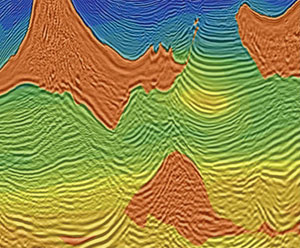
Enhancing Salt and Subsalt Imaging in Deep Water, Gulf of Mexico, with Common Offset RTM Gathers
Jianshun Sheng, Seung Yoo, Cristina Reta-Tang and Gary Rodriguez
We focus on extracting new value from previously acquired orthogonal WAZ surveys in the Mississippi Canyon area where some of the largest and still active deep water discoveries reside. Some analyses estimate that many large subsalt/presalt fields can still be discovered. In this study, the subsalt images which are critical…

Post-migration Coherent Noise Removal by Dip Decomposition to Enhance Subsalt Imaging in the Gulf of Mexico
Hongyan Li, Peter Winther, Carlos Espinoza, George Zhao, and Neeraj Duhoon
In the Gulf of Mexico (GoM), with complex salt geometry, it is not unusual to see coherent noise in subsalt imaging. Such noise is detrimental to subsalt exploration and appraisal as it often leads to incorrect interpretations. The coherent noise is related to converted waves, intra-salt multiples, residual free-surface multiples, seismic data acquisition noise, and…
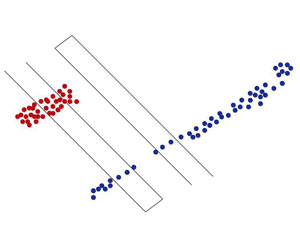
Enhancement of Seismic Monitoring in Hydrocarbon Reservoirs
Enrico Caffagni and Götz Bokelmann
The oil and gas industry is currently undergoing an extended period of instability. Technology can be leveraged to improve these difficult circumstances. The challenge is to develop ground-breaking technologies that help manage new projects more efficiently. At the same time, there is a tremendous need for technology to ensure a…

A Glimpse into the World of Seismic Attributes
Rainer Tonn
The Flemish Pass, offshore east coast Canada, has been an area of increased exploration activity since the discovery of Bay du Nord in 2013. The Flemish Pass is one of the core exploration areas within Statoil’s international portfolio. Additional recent discoveries have demonstrated further exploration success, while the award of…

Why We Should Perform PSDM and Calculate Seismic Attributes in the Depth Domain, Examples from the Woodford Formation
Marianne Rauch-Davies
We are commonly challenged to generate a drill plan in depth from time migrated seismic. In order to meet the needs of interpreters and drillers, PSTM volumes are frequently converted to pseudo depth volumes by stretching. This process affects every part of the drill planning procedure as these pseudo-depth data…

Introduction to January Focus: Emerging Technologies: Machine Learning
Hoda Rashedi
Surprisingly, the first time I was exposed to the basic concept of Machine Learning was at one of my undergraduate course called, “Philosophy of mind”. That was the first time, I was learning about how our brain functioning and how it could be biased. The year after, I took General…

A Gentle Introduction to Machine Learning
Mark Dahl
Machine learning has generated a lot of excitement in recent years. It is only a matter of time before machine learning becomes commonplace in geoscience. There are many reasons for this that I could argue, but two come immediately to mind: machine learning has enjoyed incredible success in similar data-rich…









